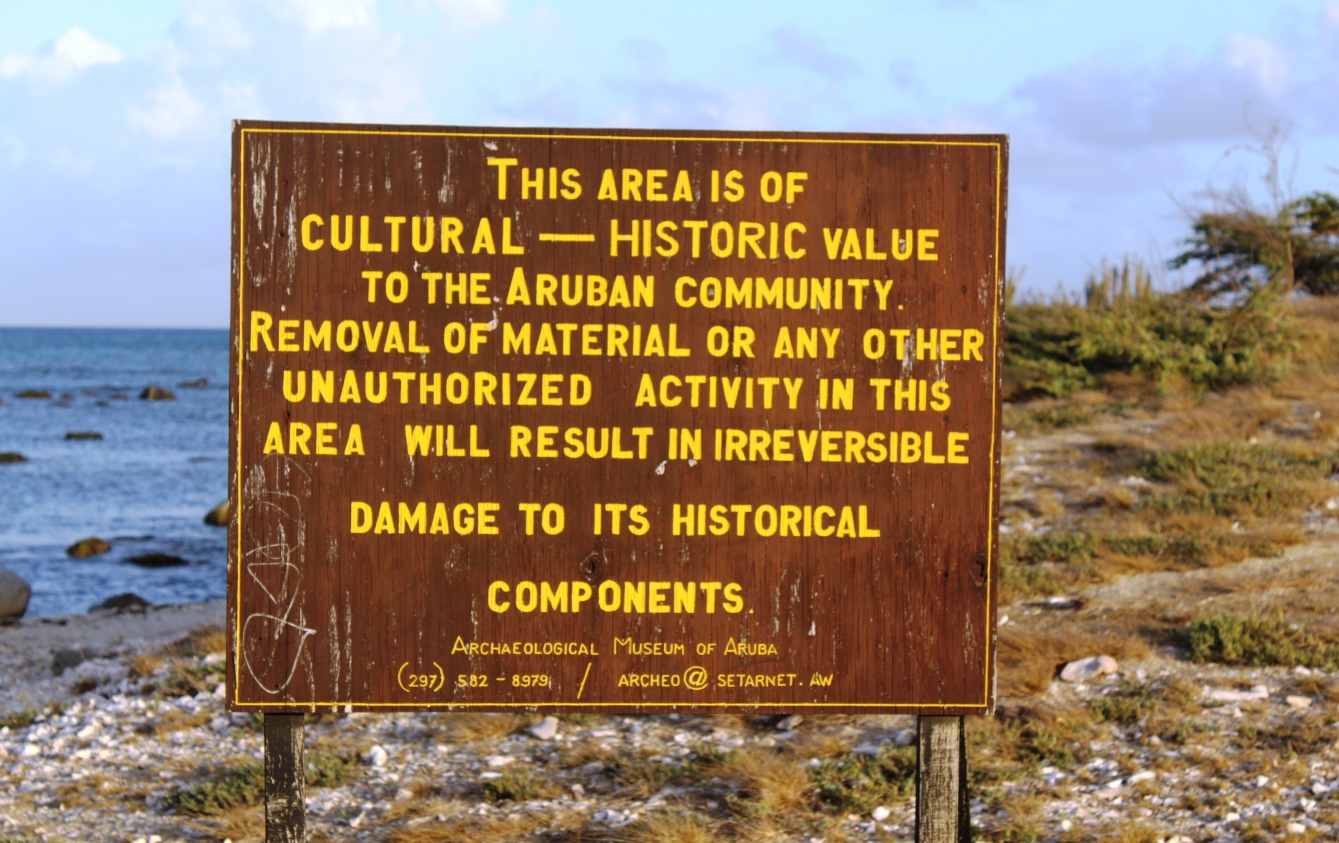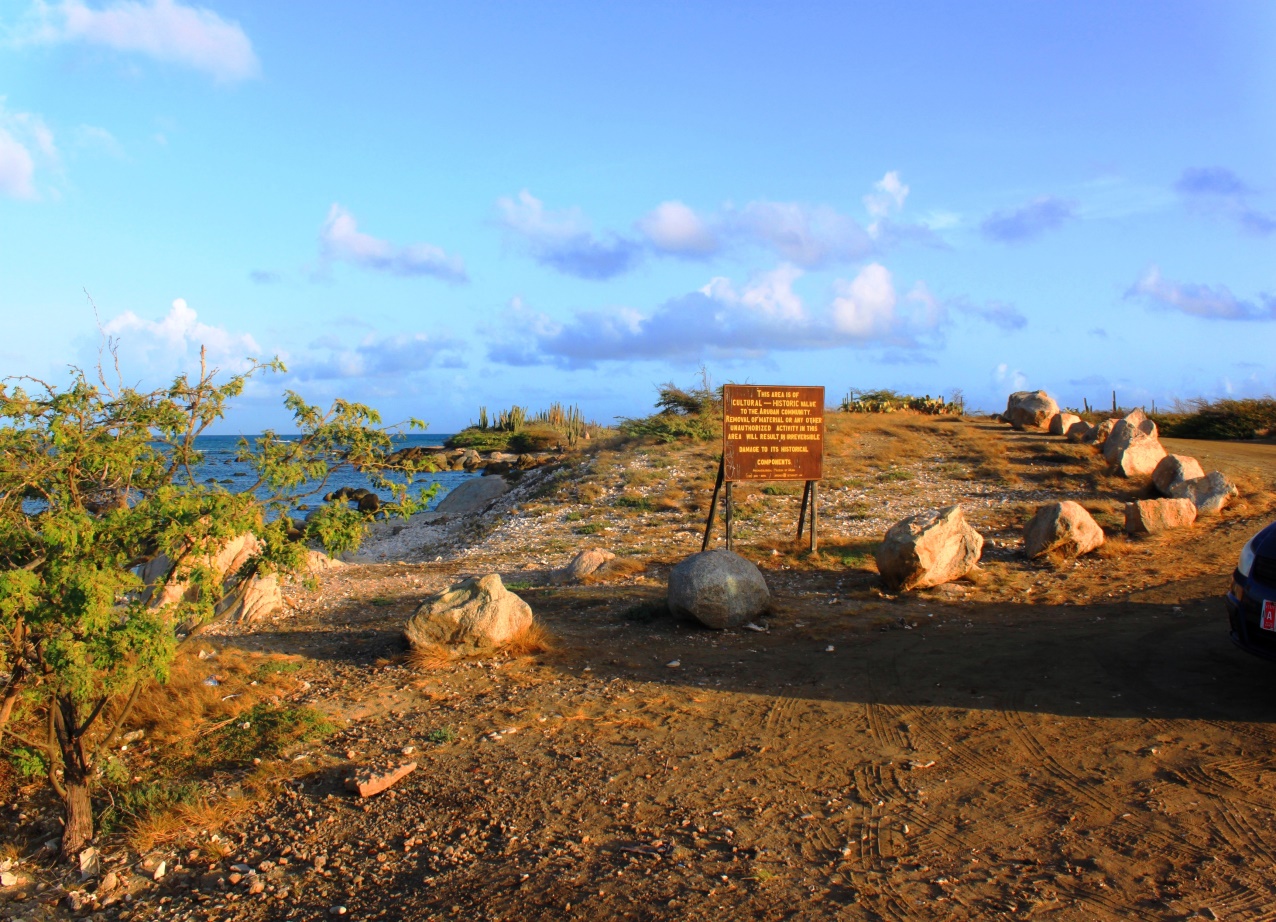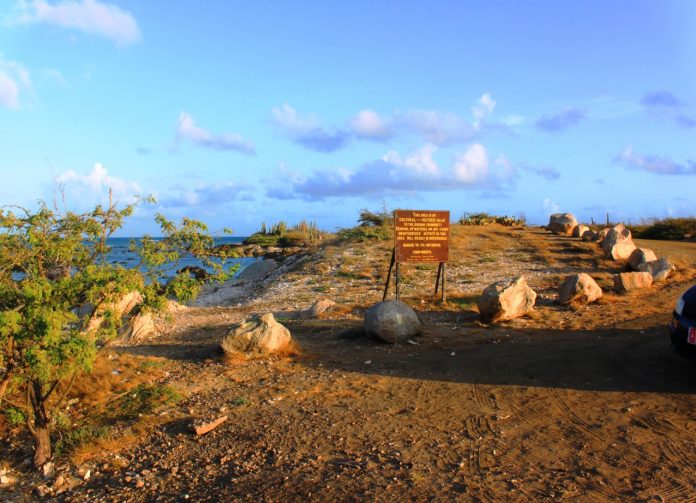Stay in touch with the “Island-Insight” revelations regarding native Aruban ethnic heritage, upholding the island’s cultural identity in each of the weekly episodes, sharing awareness and education, and encouraging each reader to experience a true island state of mind.

If you have visited the Arashi area, you have probably seen a sign that mentions that the area in question has great cultural value for the Aruban native community and is a “protected area”. In our last episode (The Arashi Shell Midden I), we began to explain the importance of this area where there are ancient rubbish dumps, which we refer to as middens, which is an old English word used for domestic garbage dumps, and this is the meaning used by archaeologists and related science since garbage deposits are one of the most common types of archaeological sites found in Aruba. Dumpsters may be of Paleolithic, Caquetio, or European origin and are places where food remains, such as shellfish and animal bones, ashes and charcoal from fires, and broken or worn tools, were dumped, thrown away, or buried.
But how do you recognize a shell Midden? While they can be found almost anywhere in coastal Aruba and are usually made up of layers of shell and bone mixed with charcoal, ash, and burnt stone, as we have mentioned, they can be seen as low mounds and heaps or as eroding sandy shores. It is sometimes difficult to distinguish shell middens from natural heaps or layers of shells along the coast. Close inspection will usually reveal charcoal, shells, blackened soil, or burnt stone that show that the site was formed by people rather than natural processes.
Middens are important because, through them, we can learn about “dating the past,” and archaeologists are able to recover charcoal, bones, or shells that can be analyzed using radiocarbon dating techniques to provide age estimates for when sites were occupied. Sometimes, by comparing archaeological specimens with modern samples, it is possible to establish what season of the year a site was occupied.

Studying the contents of middens can show where people went to get their food, what proportions of different foods made up their diet, its nutritional quality, and how it may have changed in different seasons or over long periods of time. For example, the study of middens in Aruba has shown that early Paleolithic men concentrated their hunting on possibly manatees and monk seals, which were rich in protein and fat, but later on, as these resources became scarce, they increased their fishing activities for shellfish and sea turtles, supplemented by birds, rabbits, iguanas, and island deer, to maintain their diet.
It is mainly from the study of the middens and their locations that we learn of the many animal and plant species that once existed on the island but are now extinct. Charcoal, seeds, and land snails from middens may also allow the reconstruction of past vegetation patterns.
Oral history, traditional accounts, and historical records tend to focus on important people and important events. Sometimes they show how people wanted things to be, not how they actually were. These accounts and records often contain very little information about the daily lives of ordinary people. Archaeological studies of garbage dumps can help restore balance by allowing us to discover what people collected, consumed, made, and eventually disposed of during the course of their daily lives. For all this, the conservation of the archaeological heritage is very important.
Now, if you’re intrigued by Aruba’s origins and cultural heritage, do something off the tourist grid and visit Etnia Nativa, a private residential museum where you can be touched by the island’s authentic heritage and live out the native effect between exhibits of archaeological art, archaic artifacts, lithic tools, colonial furniture, and historical items.
Etnia Nativa is, since 1994, the home of Anthony, our acclaimed columnist, who is also a native artist and island Piache who guides each visitor through his resplendent collections. His museum/home is the only place that recreates and introduces you to an authentic glimpse into Aruba’s native cultural legacy and his colonial family`s heritage dating back to 1640, when the Dutch occupation began. Meet him and enjoy a genuine contemporary Native Aruba experience!
Appointment is required + 297 592 2702 or etnianativa03@gmail.com

















